By: Toby Hagon
The development of solid-state batteries for electric vehicles (EV) has promised faster charging from a battery that is smaller, lighter and safer than current lithium-ion batteries. But their arrival always seems to be just around the corner.
In 2017, Toyota told the Wall Street Journal that it was on the cusp of a major technological breakthrough that could see solid-state batteries in showrooms by 2020.
It would have been the culmination of almost two decades of research and development for the world’s biggest car maker – and a company scrambling to catch up in the EV space.
However, in an update on the development of solid-state batteries in October 2023, Toyota said, “The aim is for the batteries to be ready for commercial use by 2027/28”.
RELATED:
EV battery recycling »
The Japanese giant is not alone in pushing out deadlines for the high-volume arrival of solid-state batteries for EVs. BMW aims to have a working prototype by 2025. One of the battery suppliers to Ford and Volkswagen believes it will have solid-state batteries in mass production in 2028. And Nissan wants to debut solid-state batteries around 2027, potentially utilising them in sports cars and four-wheel drives.
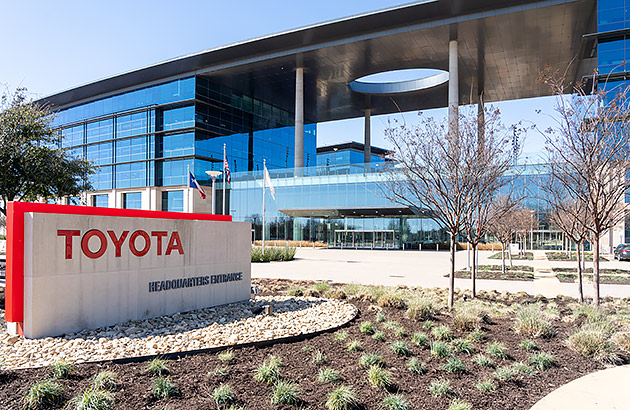
Mercedes-Benz stopped offering solid-state batteries as an option on its eCitaro bus because it decided existing battery technology could do the job. Yet it hasn’t stopped the car maker investing in start-ups looking to crack the code with solid-state technology.
Indeed, dozens of start-ups and car makers around the world are all in a race to unleash what is seen as game-changing technology. None have yet nailed the target.
What is a solid-state battery?
Solid-state batteries are still a type of lithium-ion battery. They have anodes and cathodes and they still transport lithium ions. They also still have an electrolyte, which is like the superhighway that transports the electrons between the positive and negative electrodes of a battery.
However, instead of the electrolyte being made of a liquid or gel, solid-state batteries replace it with a solid. That solid is typically either a glass ceramic or a plastic polymer. Removing that liquid also means the battery can have a smaller, lighter separator between the two electrodes, a big advantage given the size and heft of existing lithium-ion batteries.
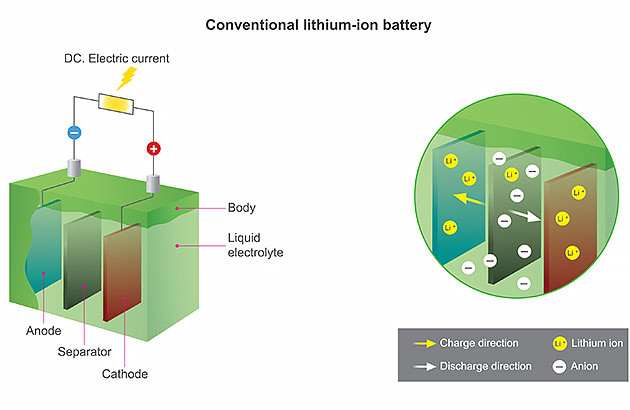
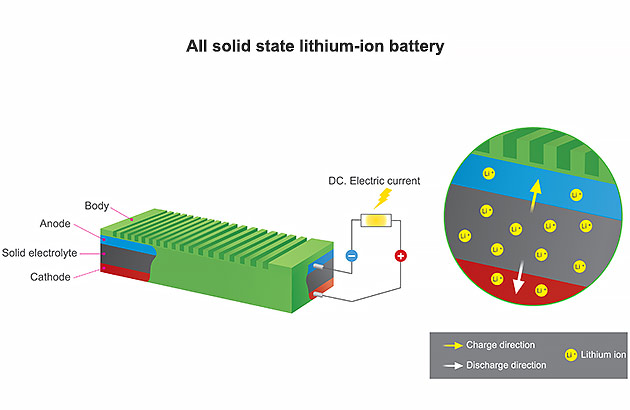
Solid-state batteries will offer more power
The change in the electrolyte promises big things for the operation of the battery pack.
Because it can transfer electrons faster, it can charge very quickly and store more electricity. In short, the battery can hold more electricity and can potentially add hundreds of kilometres of driving range in 10 minutes or less.
Holding more energy means extending the driving range. Toyota has talked of batteries capable of 1000km between charges. Alternatively, car makers can fit a smaller battery pack to save money on manufacturing what is the most expensive component of an EV.
Such are the advances in energy density that some battery manufacturers believe solid-state batteries could also be used in planes.
And for car makers it opens the door to electrifying cars such as four-wheel drives and utes that need long driving ranges for towing and driving longer distances into more remote areas.
Vehicles such as four-wheel drives and utes will benefit more from this technology, says Guillaume Cartier, a senior Nissan executive who visited Australia in 2023.
“If it’s a car that is more than two tonnes, the battery you need to have is making it heavier and more expensive.”
Cartier says the vastly improved energy density of solid-state batteries means, “either you reduce the size of the battery you are using today in cars ... so that will make the cars more affordable … or you can also use same size of battery … to electrify some cars that today are not electric.”

Sizing down and lightening the battery pack – currently typically around half a tonne – also allows designers to maximise interior space and reduce the size of other components, such as suspension parts and brakes.
Because they can function at higher temperatures, solid-state batteries can also do without the cooling systems common in EVs, another cost and weight advantage.
Solid-state batteries are safer
There’s another big plus with solid-state batteries: safety.
You don’t have to venture far into the world wide web to find videos and articles highlighting concerns about fires with lithium-ion batteries.
While early data suggests electric cars are not a big part of the problem – partly because they have advanced battery management systems other consumer items often don’t– there is still a risk of fire and a condition called thermal runaway, where a burning battery can create its own oxygen, meaning the usual ways of extinguishing a fire by depriving it of oxygen, do not work.
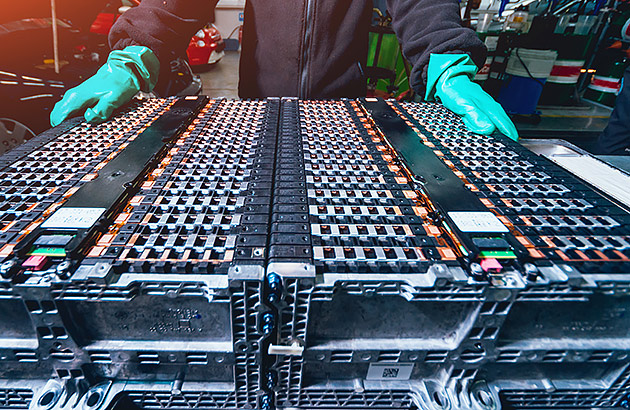
It’s the liquid electrolyte that is the dangerous component in a lithium-ion battery because of the high amount of energy it can contain. In a typical lithium-ion battery, the liquid electrolyte makes up about 25 percent of the battery’s components.
Having a solid electrolyte reduces the risk of it leaking, reducing the risk of thermal runaway.
A game changer for EVs
Solid-state battery technology is often described as being the holy grail of EV development, something echoed by Nissan’s Guillaume Cartier.
“Solid-state batteries is a technology that we want to own - it’s a game changer,” says Cartier.
Given the two huge advantages of solid-state batteries, it begs the question of why manufacturers haven’t adopted solid-state battery technology yet. Or, at least, fast-tracked it.
Rest assured, there’s been no shortage of trying, something that has involved countless billions in development dollars. The short answer is it’s not quite that simple – or cheap.
Solid-state batteries are currently more expensive to manufacture, something amplified by the technology being relatively new. Considering batteries are by far the most expensive part of an electric car, it makes the focus on dollars even more critical.
There’s also a challenge with manufacturing solid-state batteries to scale, something essential to their use in EVs. While they’re already in use in some consumer electronics and lower-volume applications, there’s currently nothing like the mass production that electric cars require.
Dr Adam Best, principal research scientist at CSIRO, says scaling up production is the barrier right now.
“Physically manufacturing the batteries isn't so much of an issue, but manufacturing these reproducibly at scale is a substantial challenge,” says Dr Best.
He likens it to plasma TV technology when it was in its infancy; it was prohibitively expensive to start with but quickly became affordable once it was being built in high volumes.
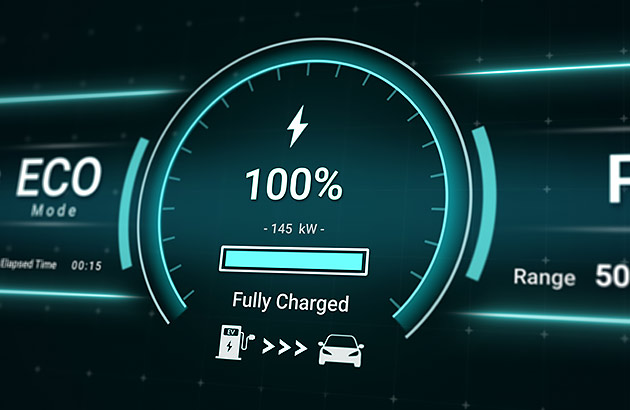
The temperature barrier
One of the issues with solid-state battery development relates to temperature, with early development of solid-state batteries favouring temperatures of 50-60 degrees Celcius for their efficient operation.
One solution is onboard heating systems, but these would reduce efficiency because they would require energy that would otherwise be used to move the vehicle.
“More than likely, they’ll have to put in heating elements to keep the batteries warm so that you can get the full performance from them,” Dr Best says.
Another solution is to tweak the chemistry and cell makeup to improve performance at ambient temperatures. All of which involves research and development, which equates to dollars. Lots of them.
How long will a solid-state battery last?
There’s also the issue of how long solid-state batteries will last. Many consumer items may only have a useable life of a few years, whereas people expect cars to run for a decade or more - often many decades.
Dr Best also says car makers rightly set higher standards for their batteries than manufacturers of other products.
“Automotive manufacturers have really, really stringent standards,” he says, highlighting this as one reason their commercialisation has been delayed. “There's a lot of moving parts that go into this piece of work.”
Toyota recently provided some insight into the challenges of ensuring solid-state batteries lived up to the brand’s reputation for reliability and durability.
“A longstanding technical issue has been that repeatedly charging and discharging the battery causes cracks between the cathodes and anodes and the solid electrolytes, degrading battery performance,” says Koji Sato, Toyota’s global president and CEO.
Working with partner Idemitsu, Toyota says it has now found a solution to ensure solid-state batteries can last many more years.
“Through repeated trial and error and by combining the material technologies of both companies, we have been able to develop a crack-resistant material that demonstrates high performance,” says Sato.
Despite the challenges to date, Sato says the company is “now on the path toward achieving both performance and durability in solid-state batteries”.
But, again, it’s looking like being the best part of a decade behind the original forecast for consumers to be driving away in cars powered by solid-state batteries.
Other EV battery developments
Current lithium-ion batteries utilise two main chemistries: NMC and LFP.
NMC (or NCM) batteries are nickel manganese cobalt and were seen by traditional car makers as the preferred choice, albeit a relatively expensive one.
LFP batteries, or lithium ferrous phosphate, are cheaper to manufacture but don’t hold as much energy. That hasn’t stopped the likes of Tesla and BYD – the world’s two largest manufacturers of EVs – from simply putting in slightly bigger battery packs.
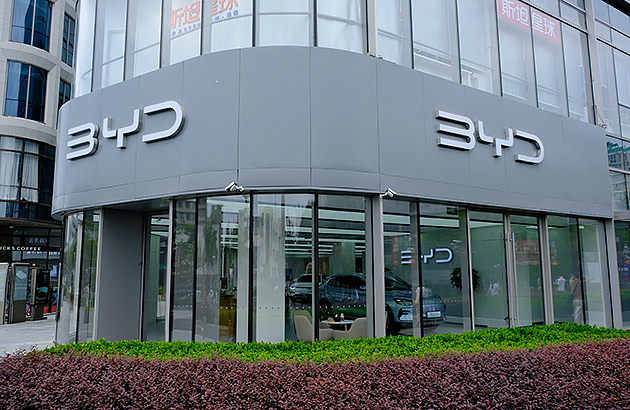
Further advances in LFP technology is making it the preferred choice for many, something Dr Best says will see it play a role for years into the future.
“The beauty of LFP is the performance for the price point,” he said. “I think that chemistry will be around for quite some time.”
At the same time, battery manufacturers are exploring other battery technologies, including sodium-ion batteries, which can be much cheaper to produce, albeit with lower energy density.
And CATL – one of the giants of the battery industry – earlier this year announced a condensed battery, which uses a semi-solid electrolyte to create high energy density.
All of which reinforces the intensity of development of the humble battery – a battery that looks set to pack a much bigger – and safer – punch by the end of the decade.
Considering an EV? Get a discount on your car loan interest rate.
Get 0.50% p.a. off your car loan interest rate when you buy an electric vehicle.
T&Cs: Discount applies to fully electric new and used vehicles, excludes Hybrid vehicles. Offer is subject to RAC Finance Lending Terms and Conditions. Fees and charges apply. Australian Credit Licence 387972.
